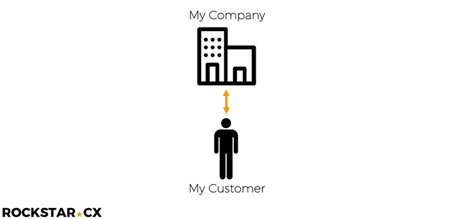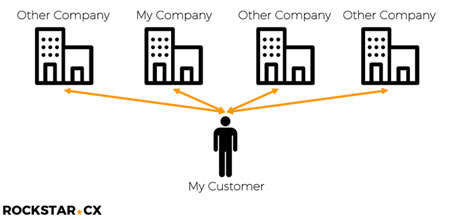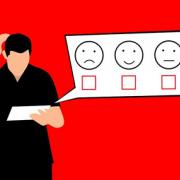I put a question out across social media not long ago asking: “What is customer experience?” I was seeking insight into how people view the definition of customer experience (CX). I received a bunch of really cool answers. Here are some of them:
It's everything your company does for your customers, to your customers, and how it makes them feel about it.
How customers perceive their interactions with your company.
Everything (and I mean everything — both tangible and intangible) that a customer encounters in their involvement with your business/brand.
The customers' entire interactive journey and engagement with an organisation.
Customer experience is any point of contact between an organization and its either internal or external customer which gives positive or negative perception of the company.
The Wikipedia definition of customer experience is, “The product of an interaction between an organization and a customer over the duration of their relationship.”
If we were to mash all these definitions together, we might end up with something like: “The sum of the interactions, perceptions, and feelings a customer has with your company” (see Figure 1).

Figure 1 — Traditional CX definition.
You might think that this is a decent definition ... but you’d be wrong. Most of these definitions run along the same theme; the problem is, that theme is completely inside-out. These definitions take a company view of customer experience, not a customer view of customer experience.
Let’s use the example of an airline and take these definitions of customer experience to be true. When someone takes a flight, we would assume that his or her customer experience looks something like this:
-
Buy a ticket
-
Check in
-
Board the plane
-
Fly
-
Leave the plane
-
Collect baggage
When in real life, we know that our experience as a customer is much more than that. It’s more like:
-
Decide to take a trip
-
Research the flight
-
Buy the ticket
-
Book the hotel
-
Book the rental car
-
Pack
-
Travel to the airport
-
Check in
-
Security
-
Spend time in the airport
-
Board the plane
-
Fly
-
Leave the plane
-
Go through immigration checks
-
Collect baggage
-
Leave the airport
-
Travel to the hotel
-
Check in at the hotel
-
And so on...
A lot of this is out of the airline’s control, but that doesn’t mean it doesn’t happen and it doesn’t mean that it isn’t part of the customers’ experience.
We need to understand that a customer’s interactions with our company are just a small part of a bigger picture. The sum of the interactions a customer has with our company isn’t the customer experience, that is just part of the whole customer experience.
I believe a more accurate definition of customer experience is: “The sum of the interactions, perceptions, and feelings a person has during the achievement of a goal or outcome” (see Figure 2).

Figure 2 — Actual CX definition.
I believe that we need to think about customer experience in a different way. It’s not just about what a customer experiences with our company, it’s about what a customer experiences with any company’s products and services while achieving a certain goal or outcome.
If you look at customer experience as the sum of the interactions, perceptions, and feelings a person has during the achievement of a goal or outcome, the way that you map, analyze, and improve CX will change drastically. Realizing that the interactions with your company are just an experience within an experience will completely and forever change how you look at CX. It’s the difference between looking at CX from the inside-out or the outside-in. Like it or not, a customer’s actual experience doesn’t revolve around you — it revolves around them.
If you’d like to harness the power of this mindset shift, there are a few easy things you can do right away.
1. Define the Successful Customer Outcome
Understanding what the goal or outcome is for your customer is going to make mapping the entire experience much easier. Understanding that the goal of someone going on vacation is “relaxation” will allow you to map the whole journey toward “relaxation” and help you inject “relaxation” into your part of the customer’s experience. The goal of a flight in this context has nothing to do with the flight itself. The flight is a means to an end, not an end in and of itself. The flight is just a small part of a bigger picture that involves many different companies. Understand the “successful customer outcome” and the role you play in delivering it.
2. Always Start with Awareness
Whenever you map an experience or journey, make sure to start with “awareness.” Ask yourself, “When did the customer become aware that they needed to achieve this goal or outcome?” The answer might be a result of your marketing effort, it might be an interaction with another company, it might be a life event. Whatever it is, start your mapping from that point. You might find there are multiple “awareness points.” That’s OK — map them.
3. Map Before and After, Not Just During
When we map experience, journey, or process, we usually only focus on the “during” part. What I mean by this is, we map what is happening during the customer’s interaction with our company or during our part of the experience. But as we’ve seen, in many cases, a lot of stuff goes on before and after interacting with our company. Some of the interactions might even intertwine or overlap with ours, so I believe it’s definitely a good idea to be aware of what is going on.
If you want to talk more about this or any other cool new CX ideas, make sure to drop me a line at jd@rockstar.cx.



